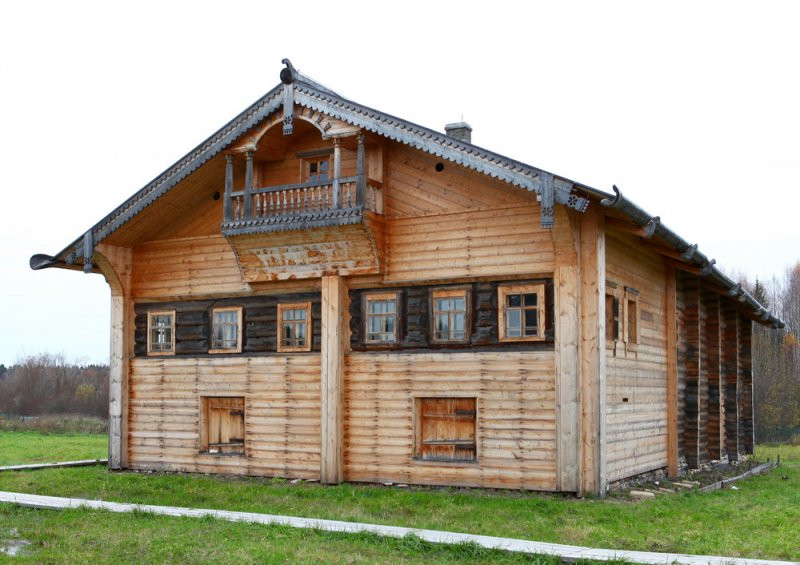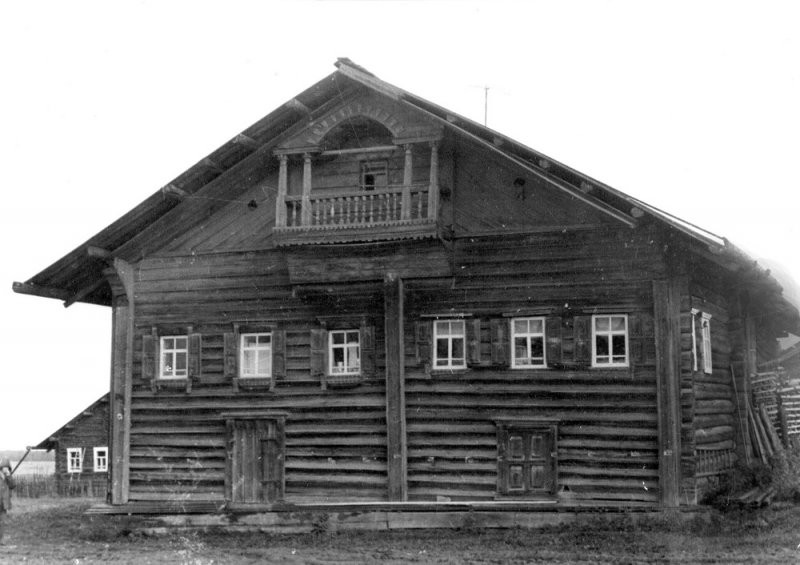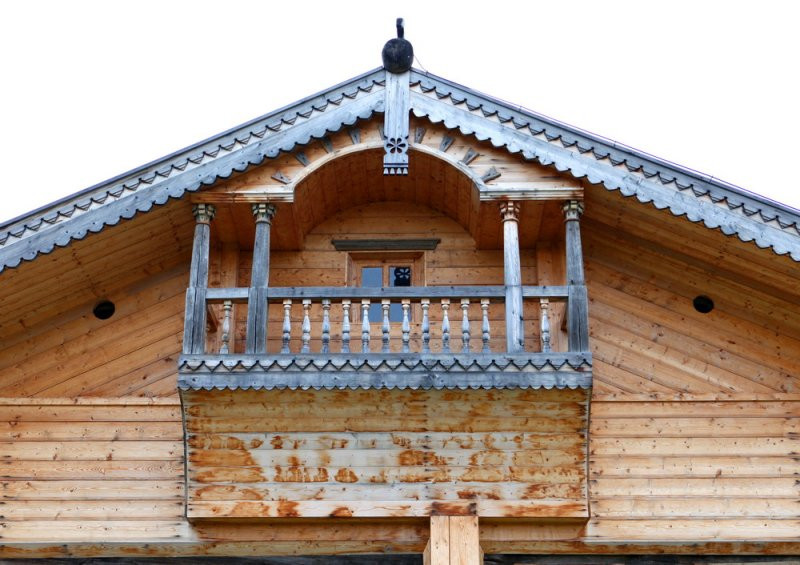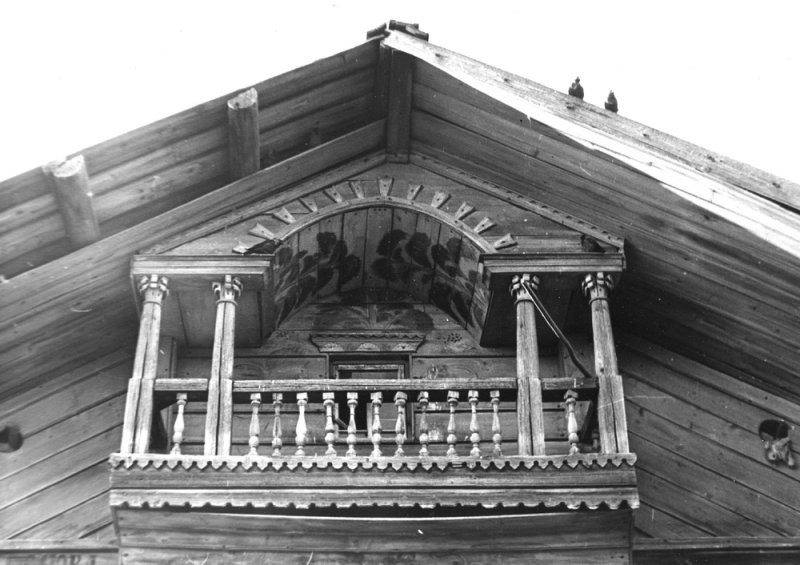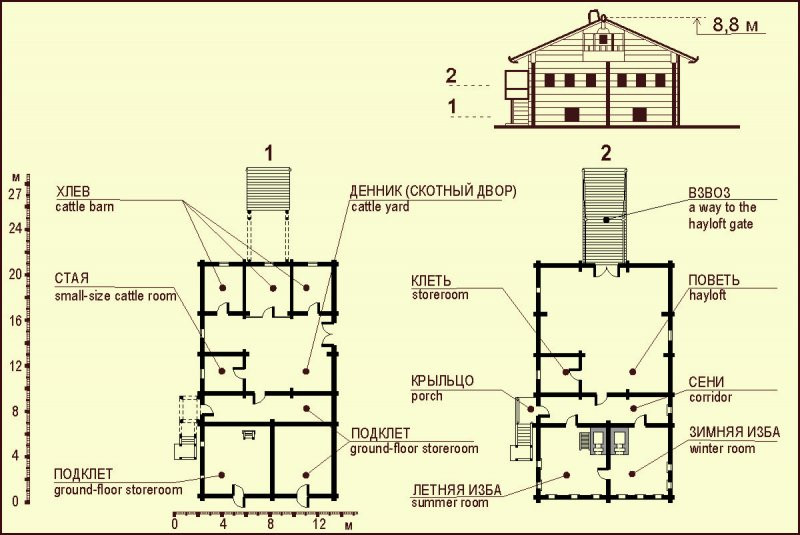M. N. Popov House
M. N. Popov House (early 19th century - 1862)
From the village Ivanovskaya, Nizhne-Uftyug Rural Area, Nyuksenitsa District.
Specialists of the Spetcproectrestavratsia Institute (Moscow) identified the building in 1979 in the course of a field survey of the Totma and Nyuksenitsa Districts. It was transferred to the museum premises in 1991.
The M.N. Popov House is a house - cattle yard complex in one row with a five-wall residential section (izba + gornitsa) under the same roof with attached to it cattle house separated by a lengthy seni called bridge.
The residential five-wall log section of the house has two sections; at that, the left log structure (the summer izba) is broader by 1m. Construction of the building might be dated by the early 19th century: initial rough hewing was found on the logs after removal of planking around the window openings. A typical design had been initially used for the main façade of the archaic house, when a decorated (krasny) glass window no less than three logs high was placed on the central line of the house, and smaller (two log height) windows barred from inside with wooden shutters were placed on both sides of it.
In 1862, the residential part of the house was slated with profiled boards, as the inscription on the signature board along the bottom line of the main façade fronton shows. This contradicts with the traditional idea that slated houses had appeared in the north on the turn of the 19th – 20th centuries.
The house has a plank nailless curb roof of special traditional chicken-gutter construction.
Along the side façade, based on initial corking, a porch under a locker roof based on four pillars has been restored.
Dimensions of the house-yard complex: 11.0 x 20.4 m.
Project author: Architect S.V. Kalyamin.
The restoration project proposed: full reconstruction of the cattle yard, solid wooden ramp and high porch at the side façade; opening of the planking at the height of window apertures for demonstration of the rough hewing on the logs made for initial windows (planking was made of a newer material); restoration of interior elements in the residential section of the house by original undestroyed joints.

